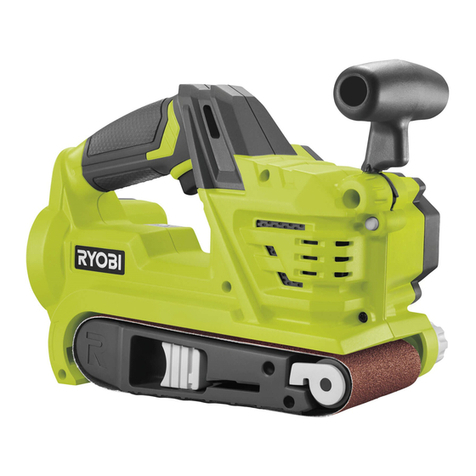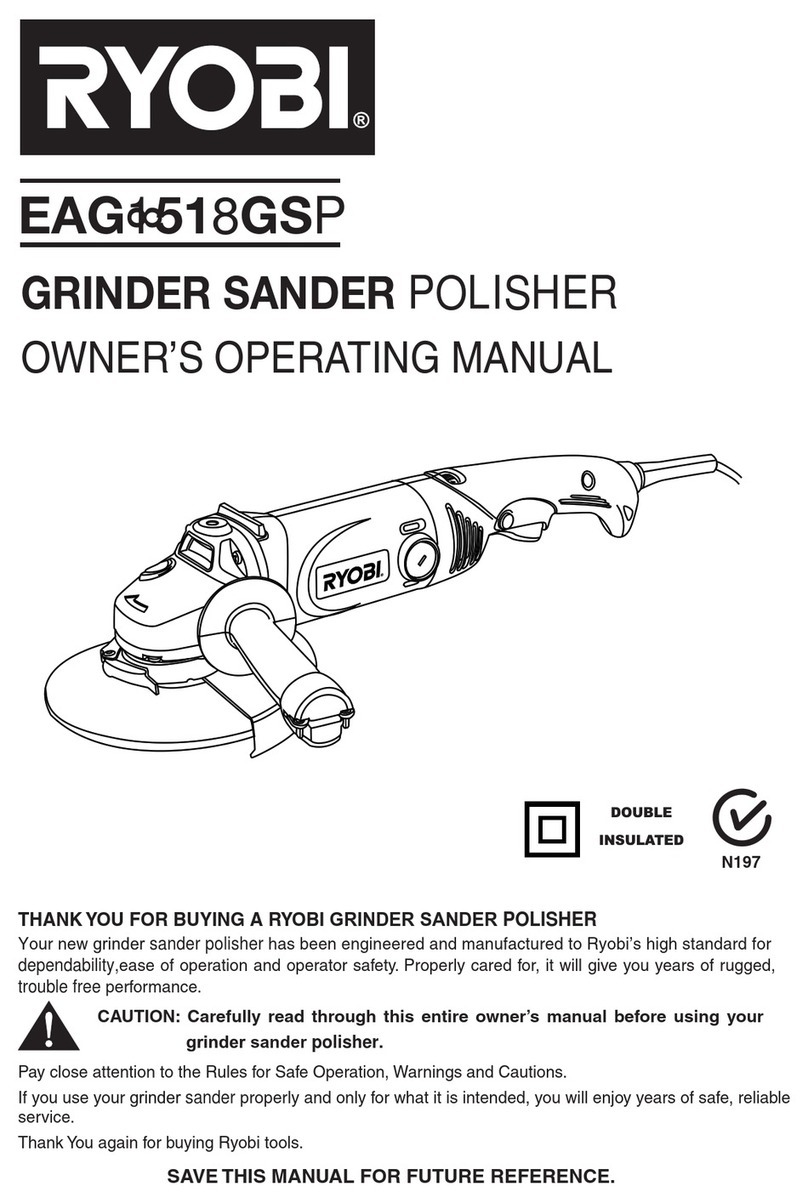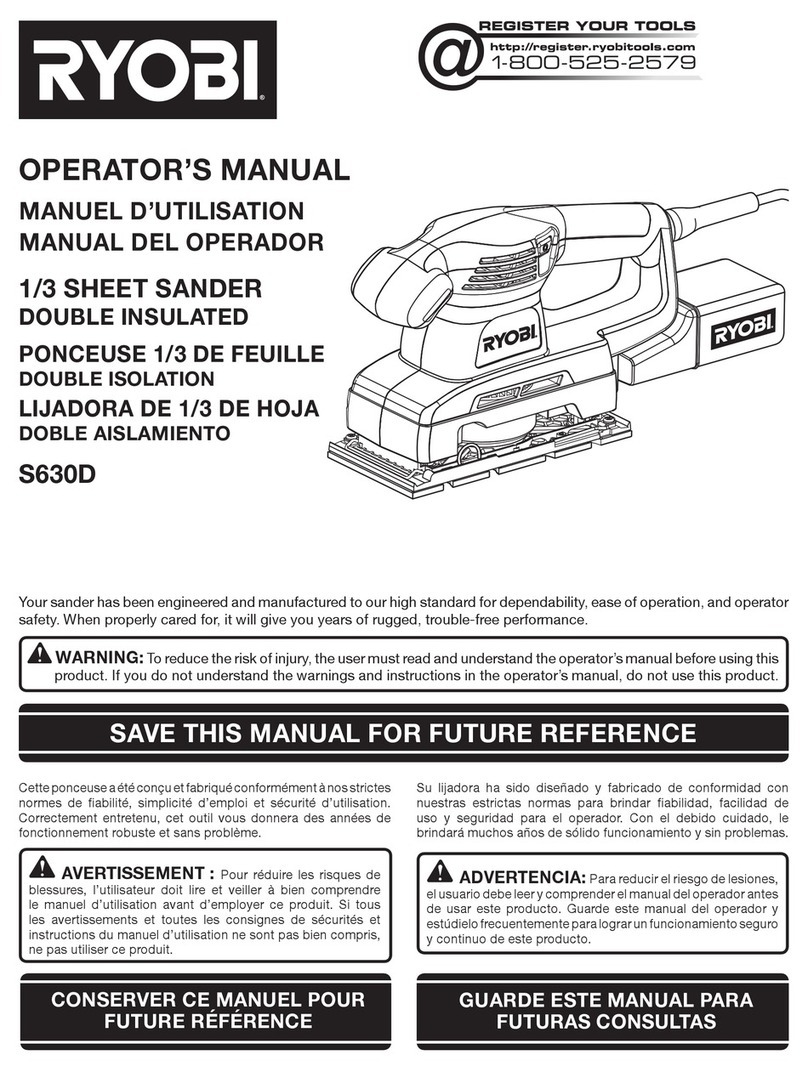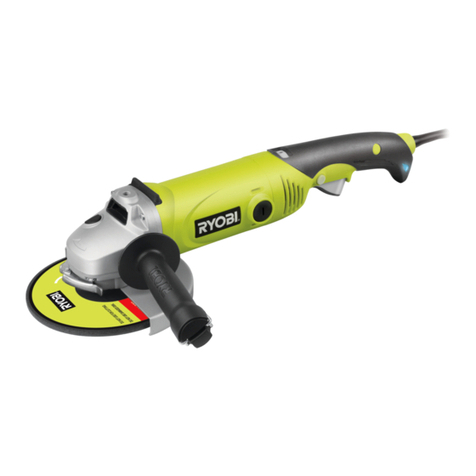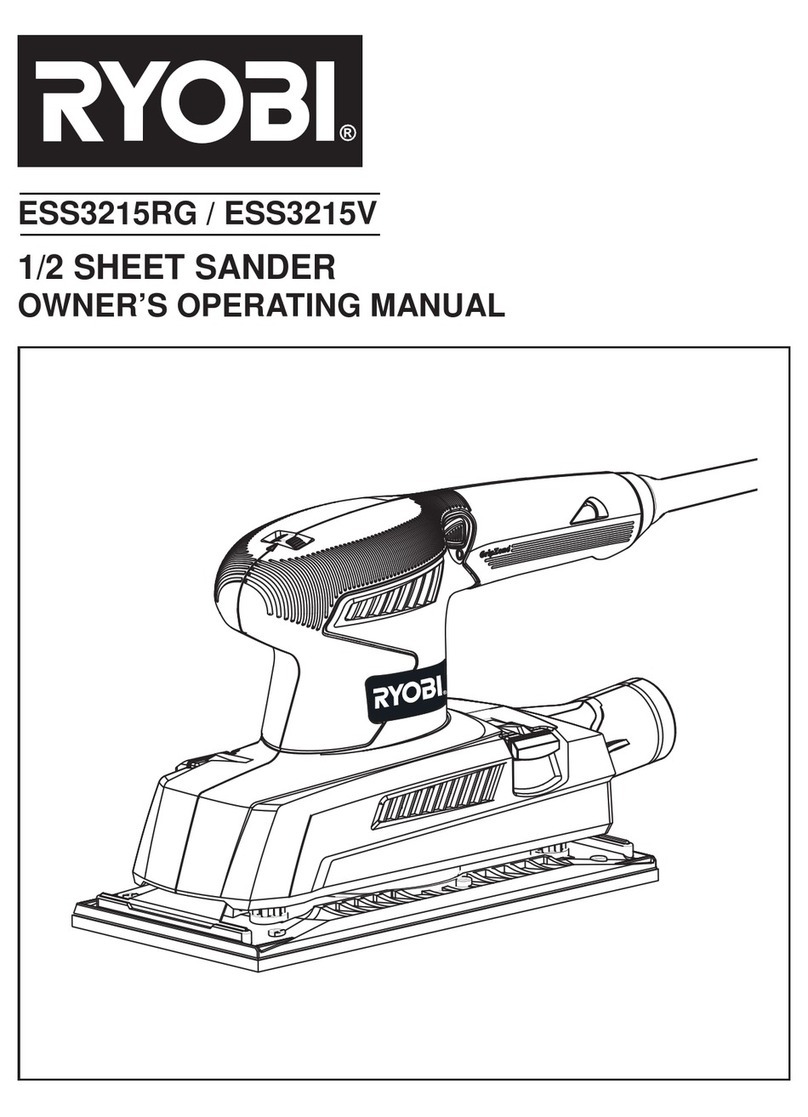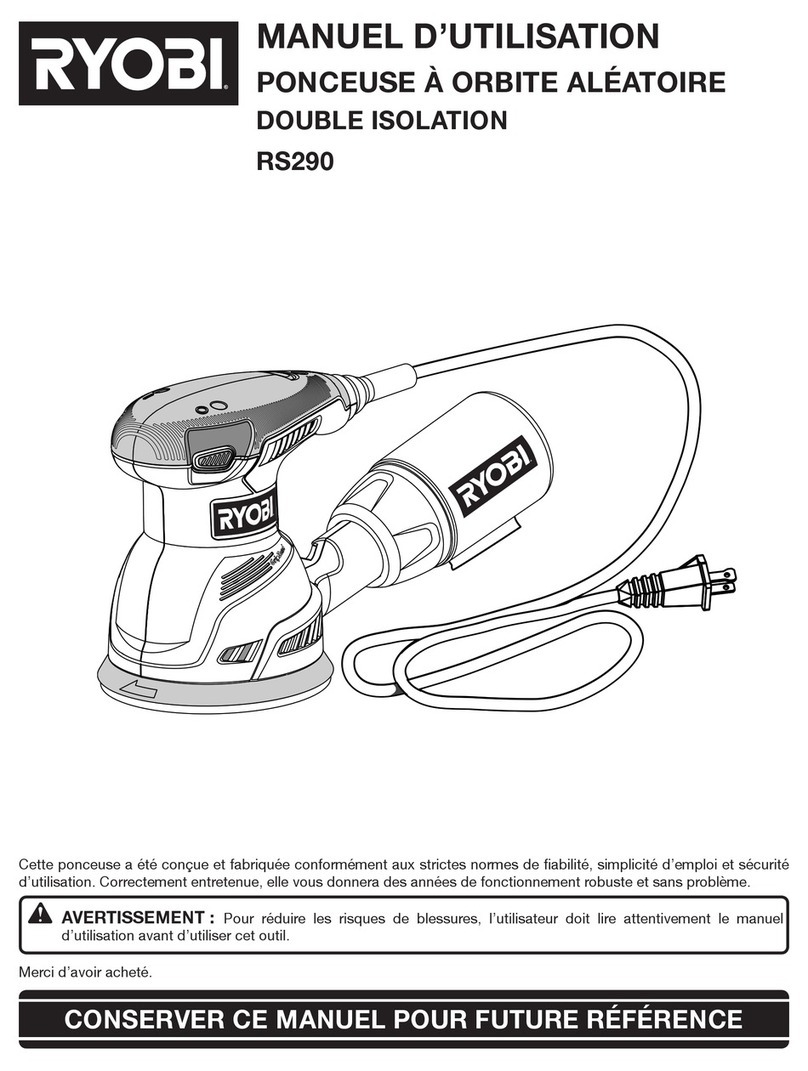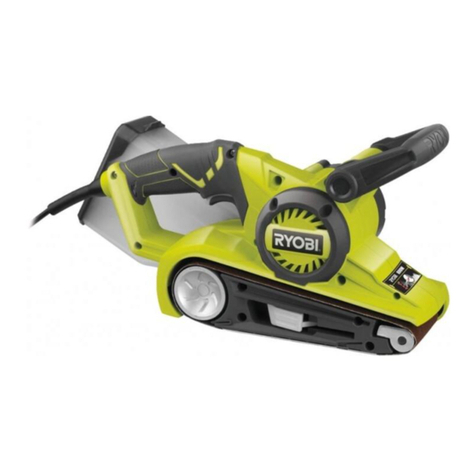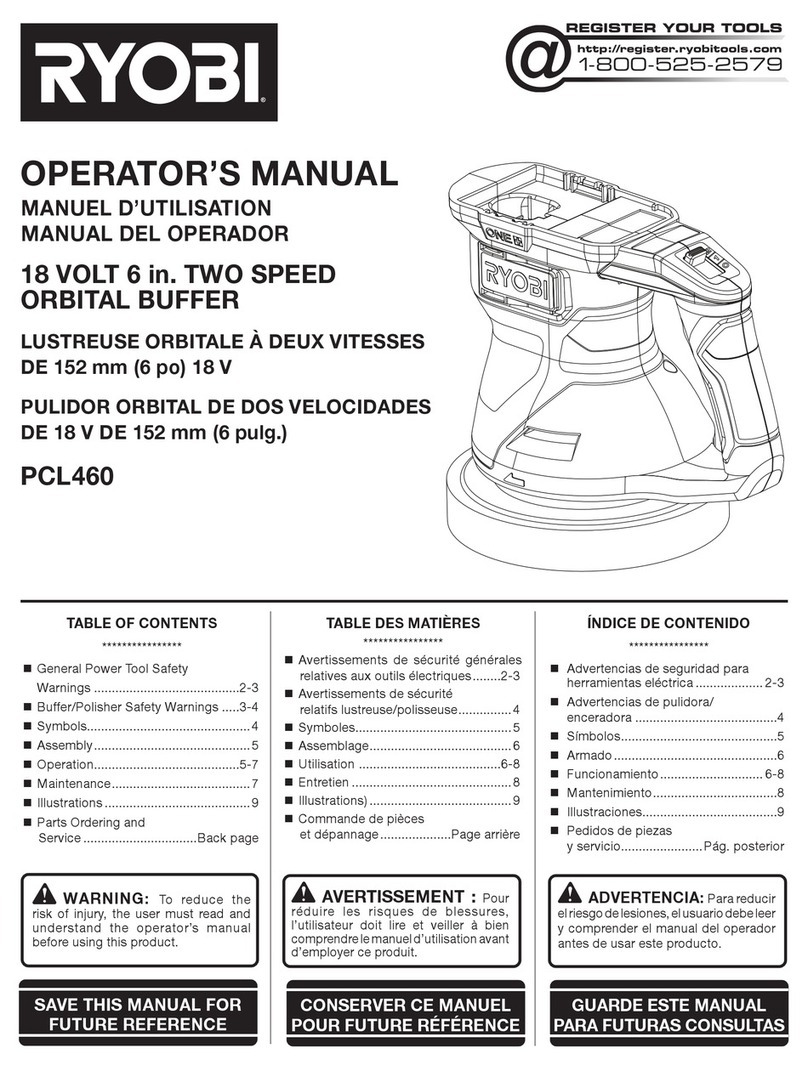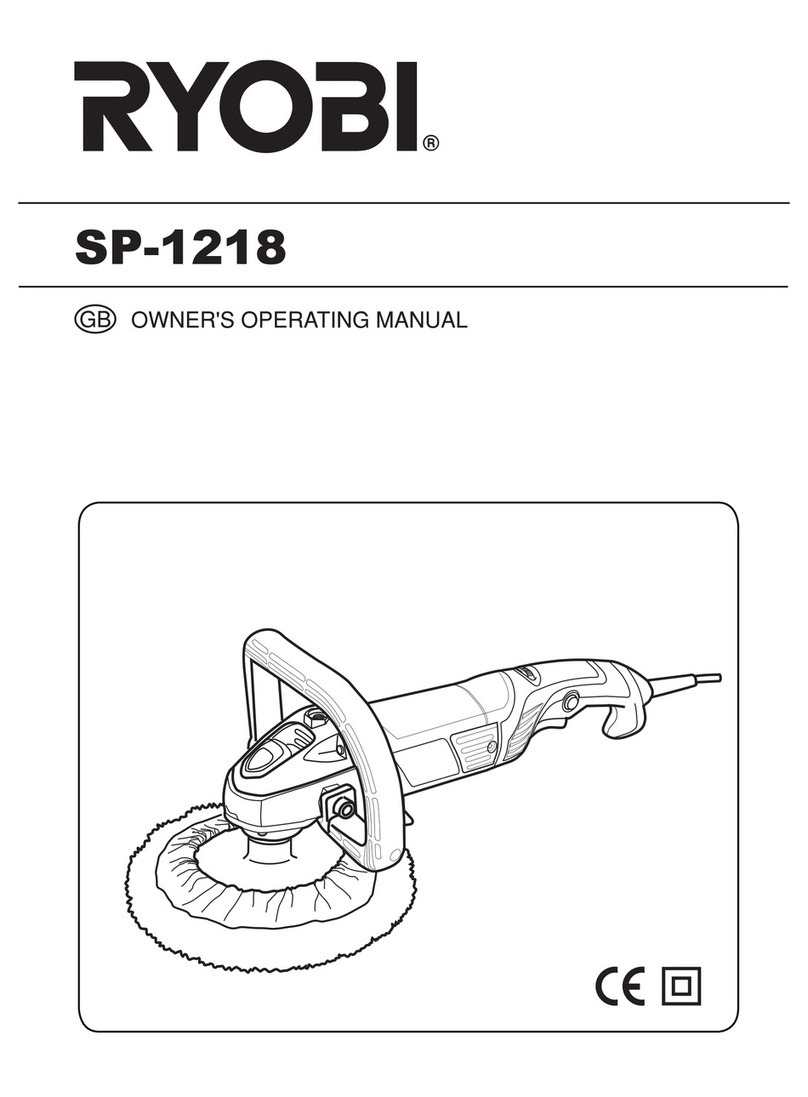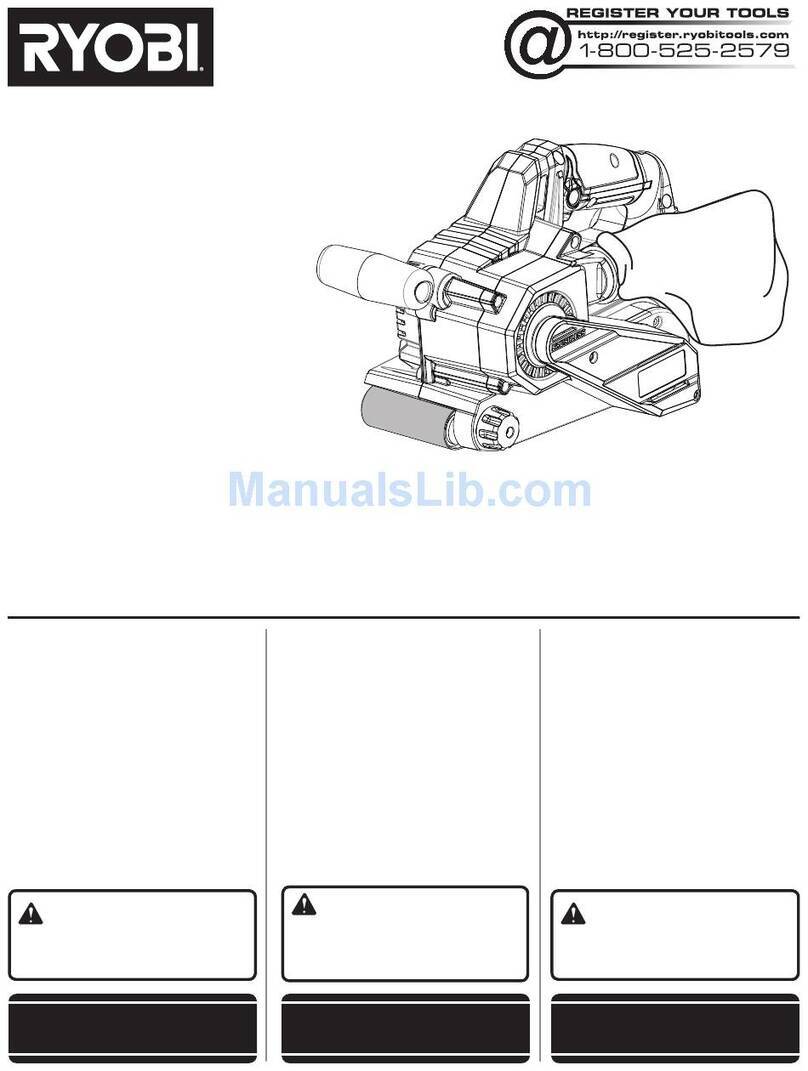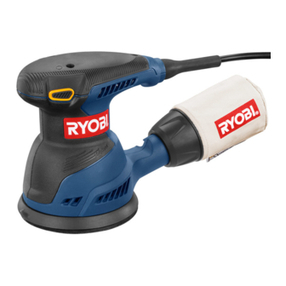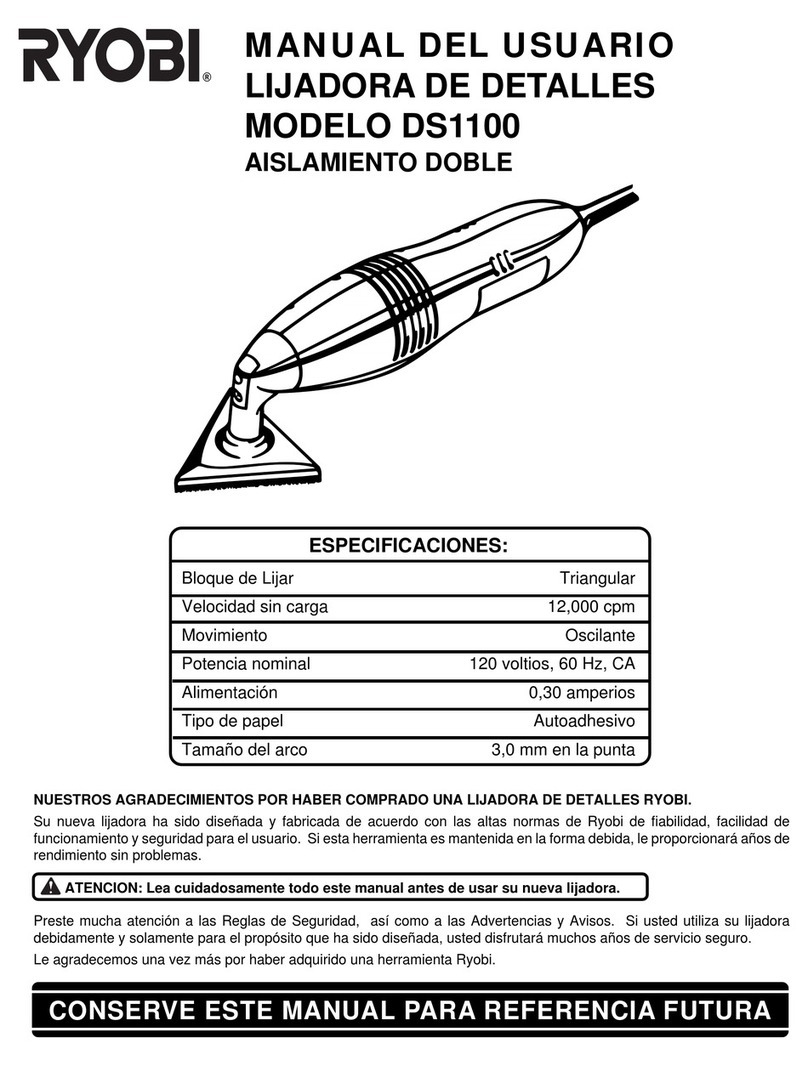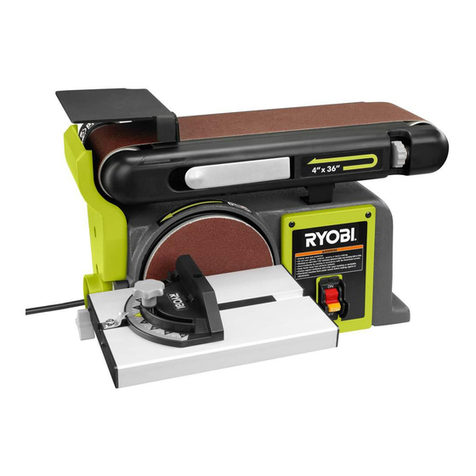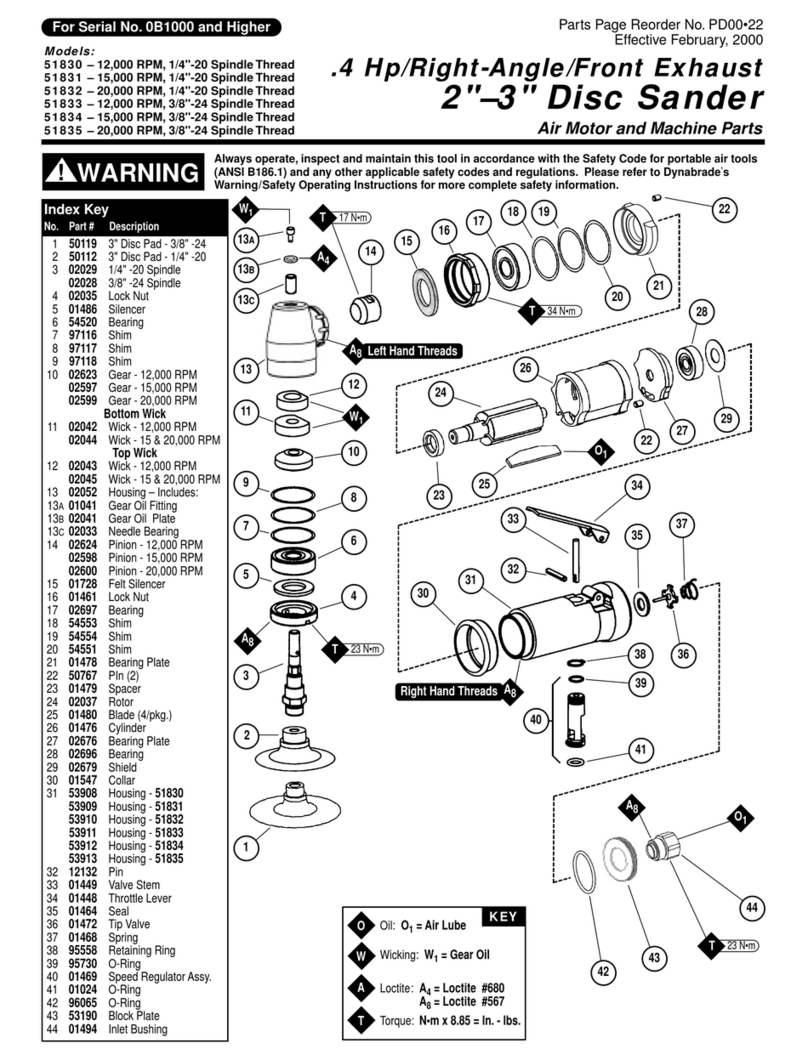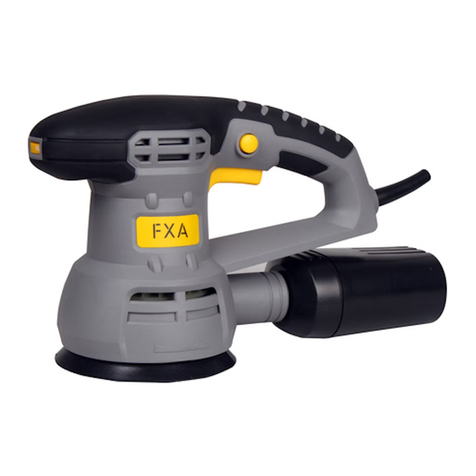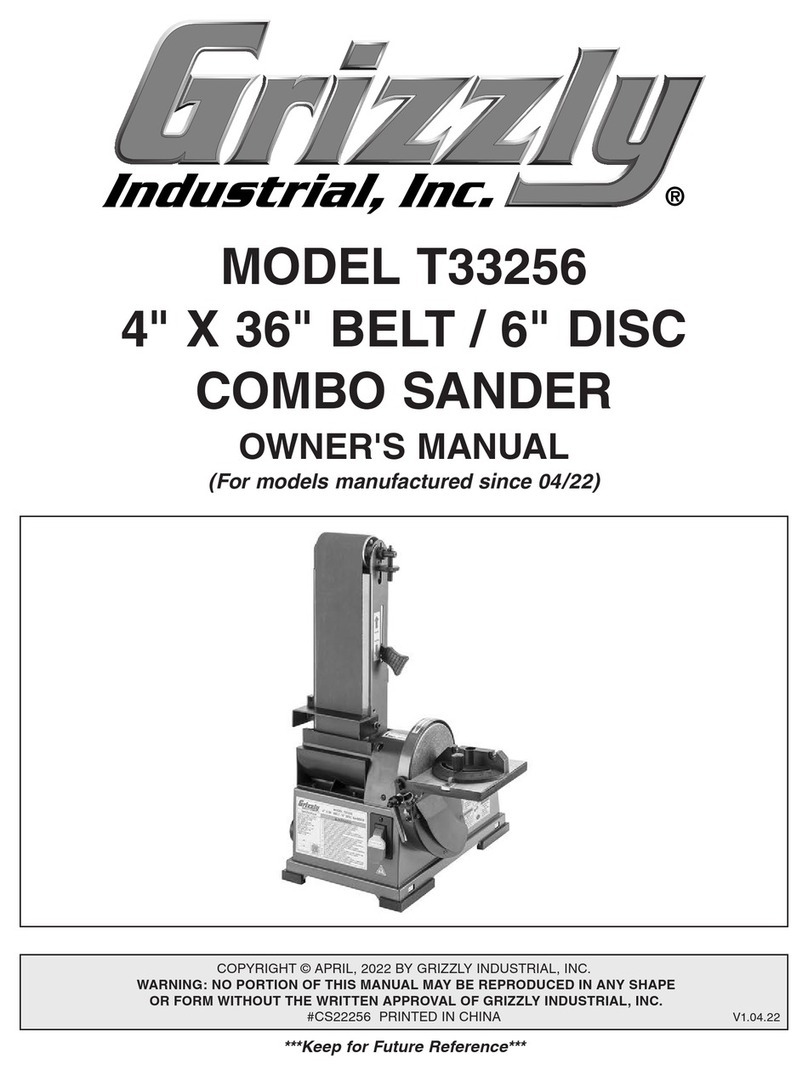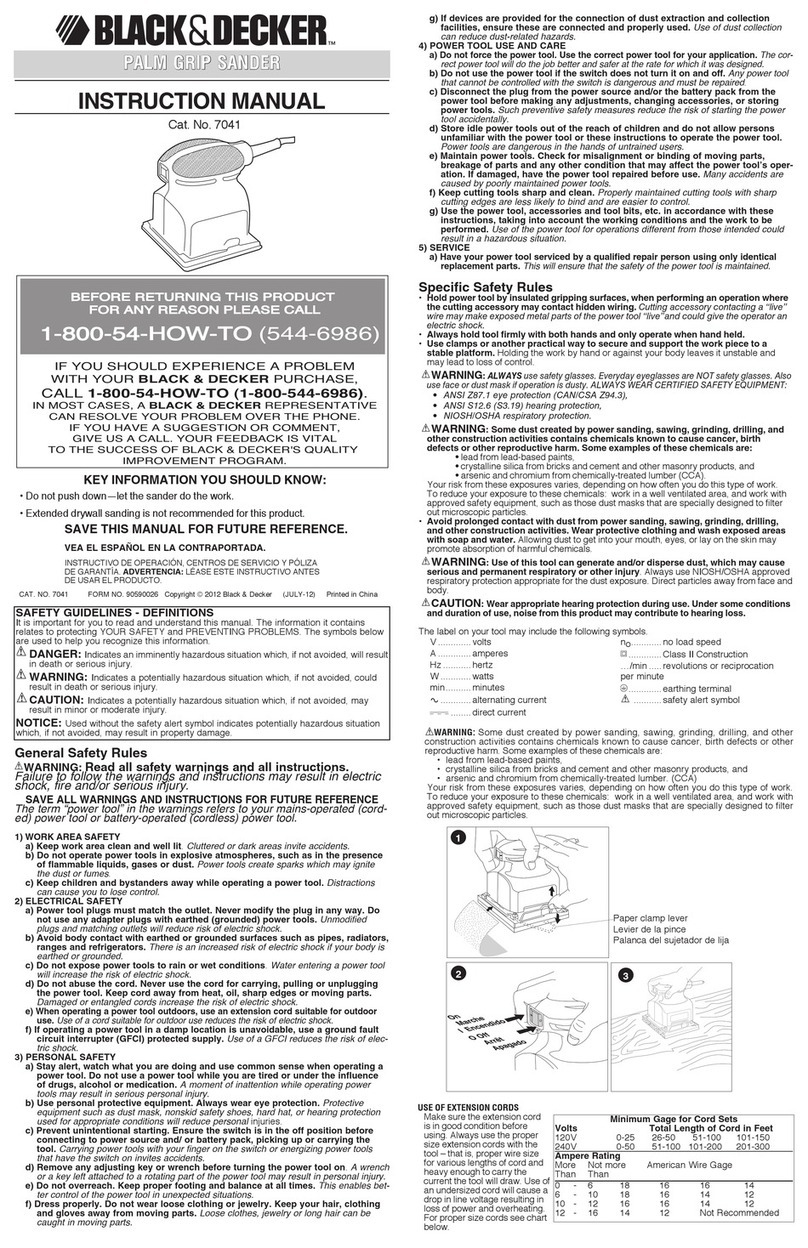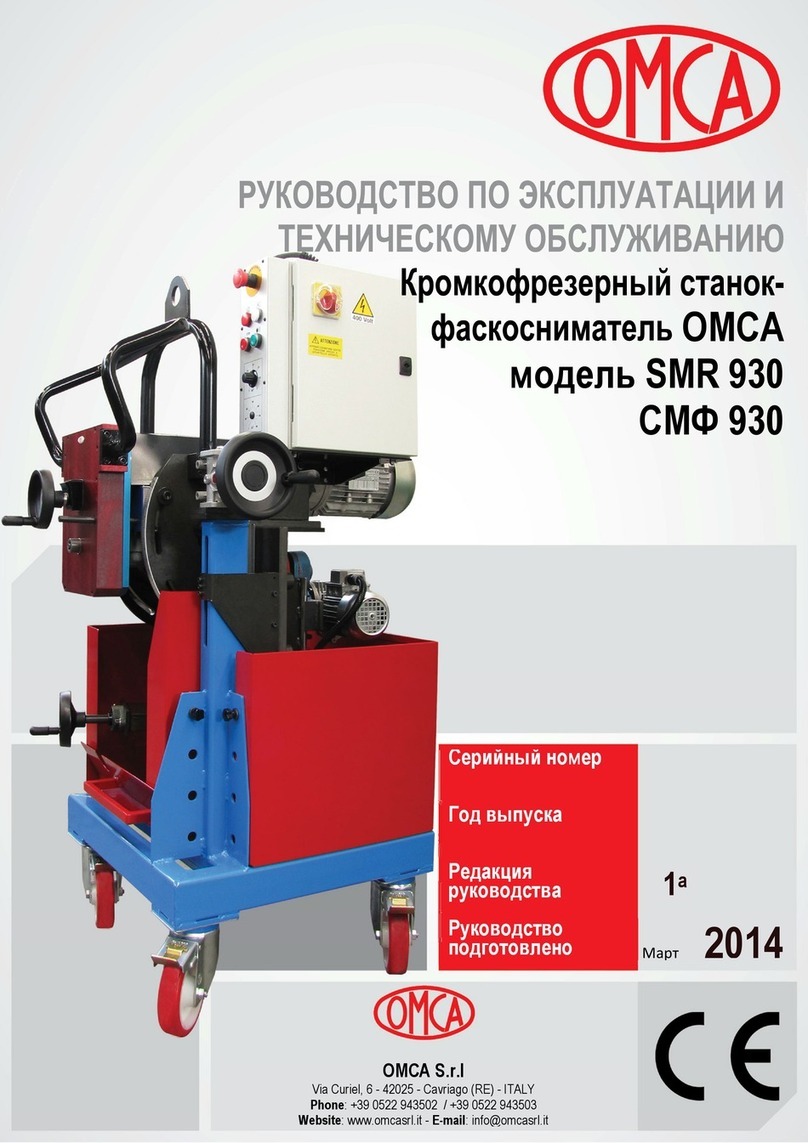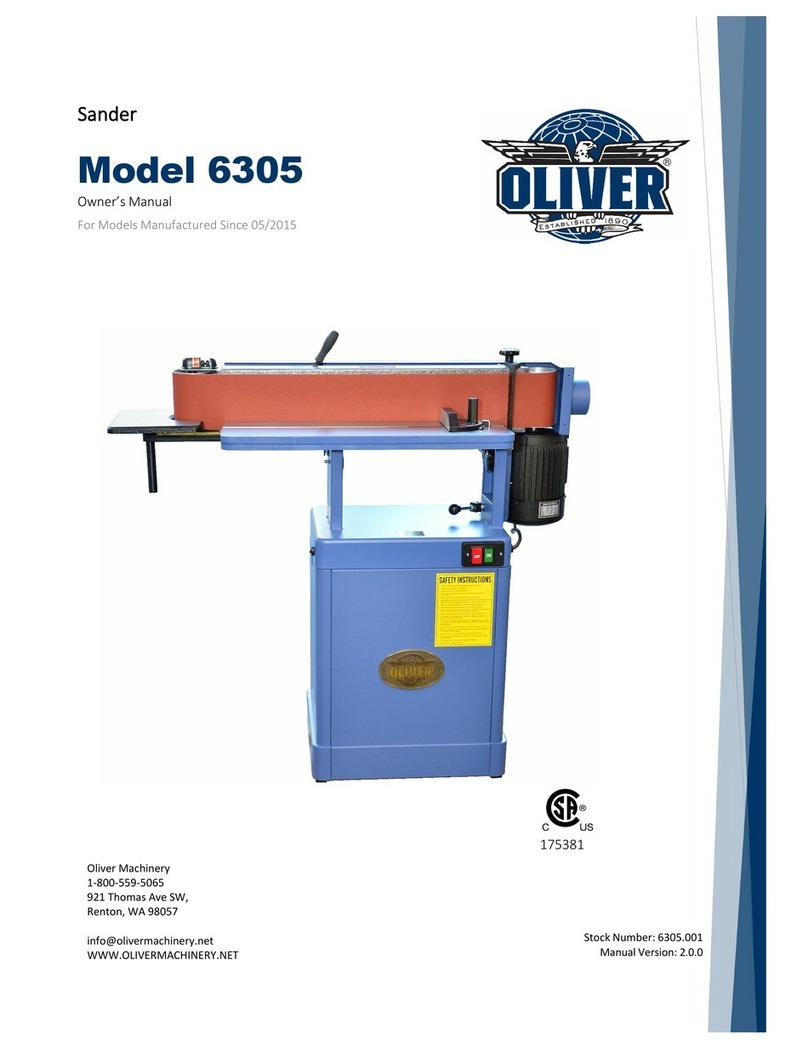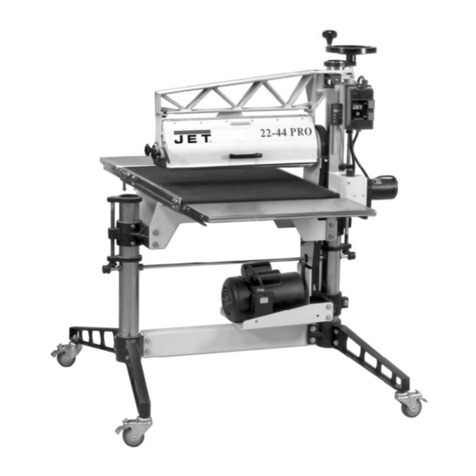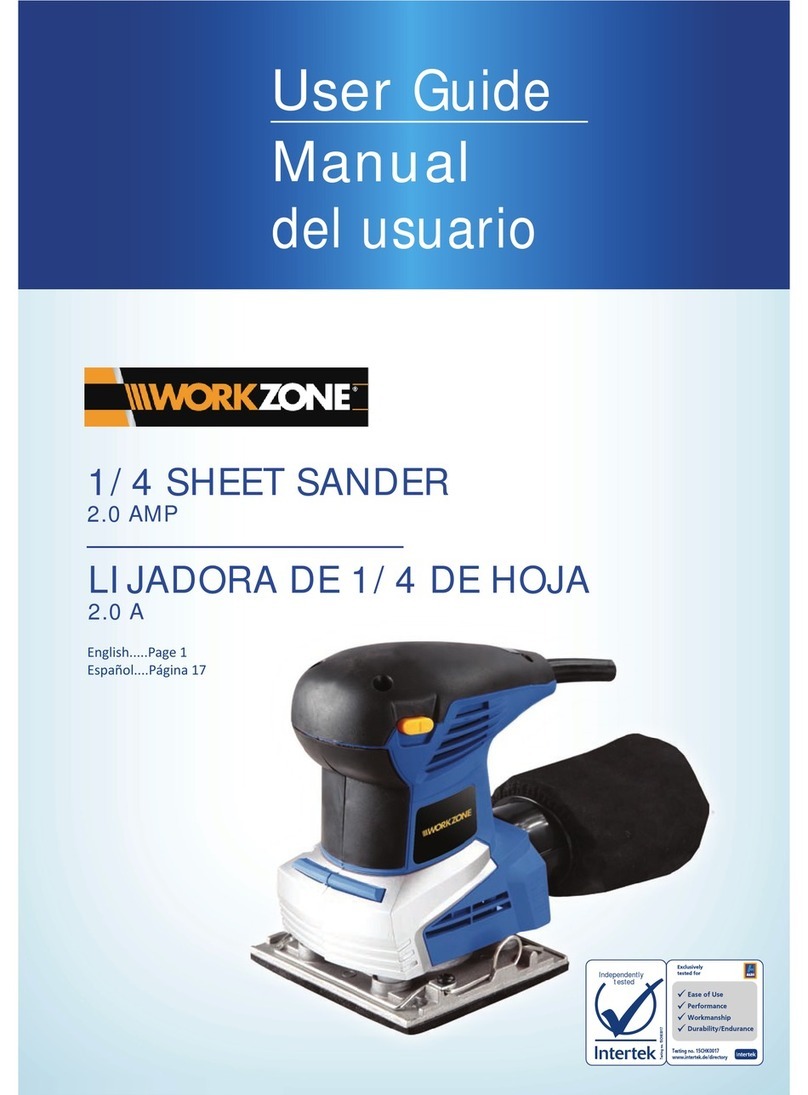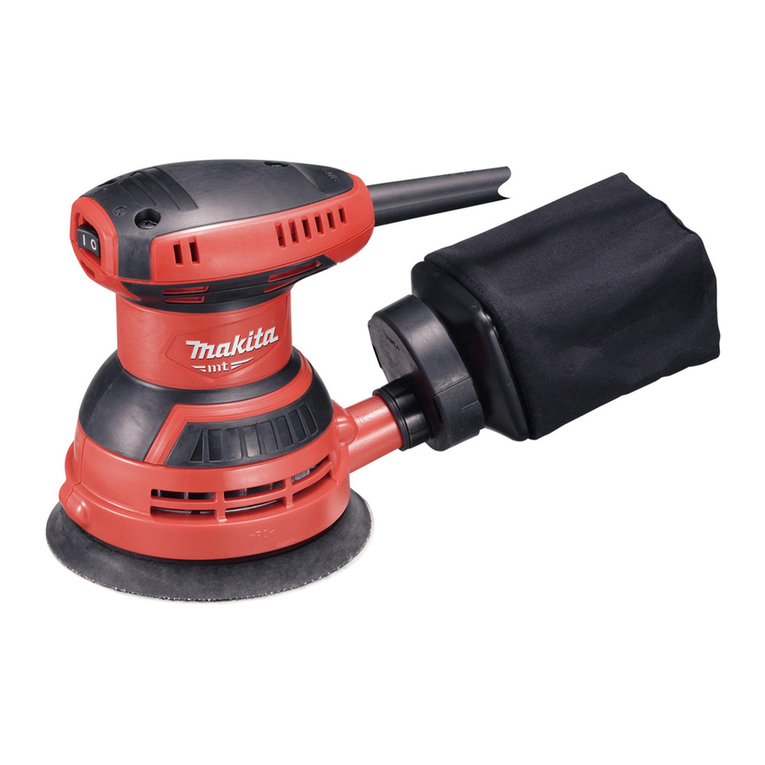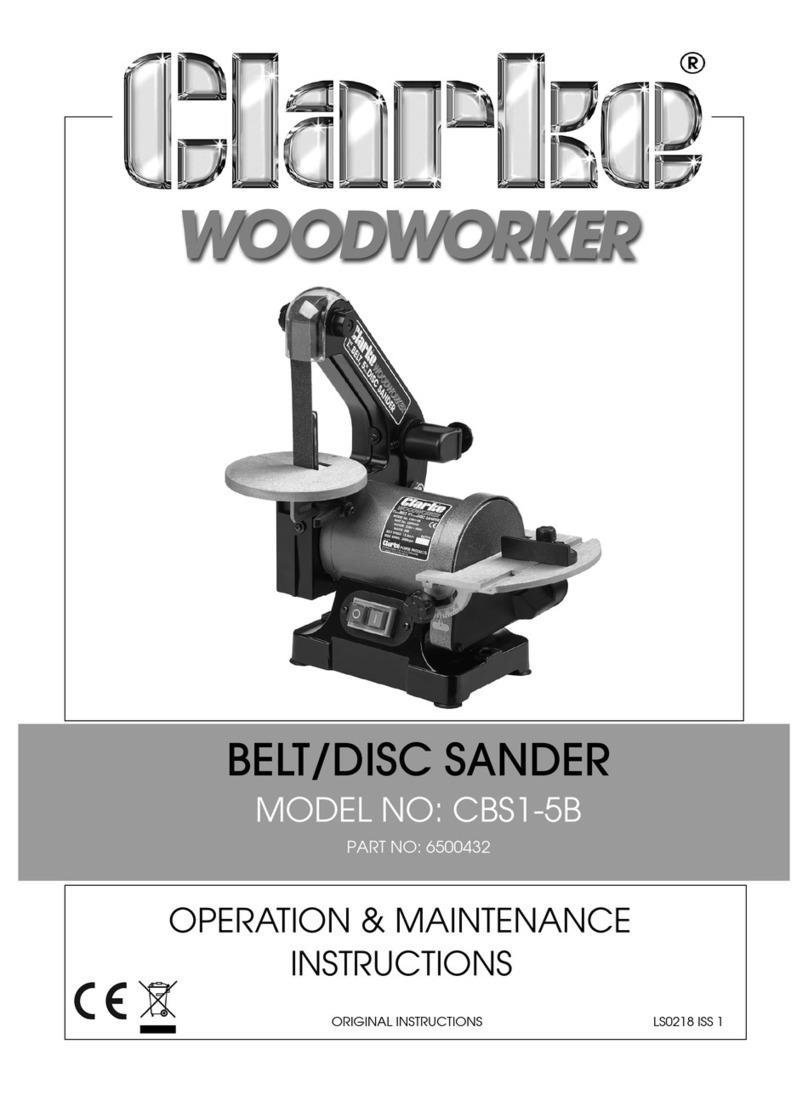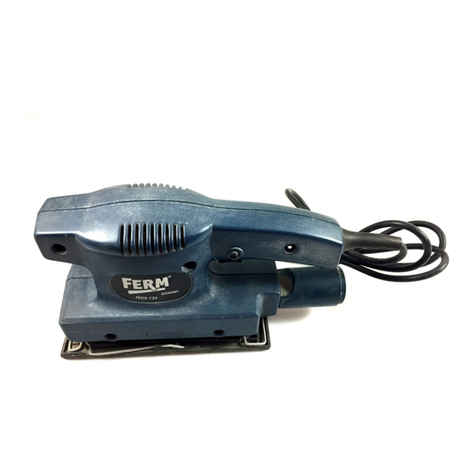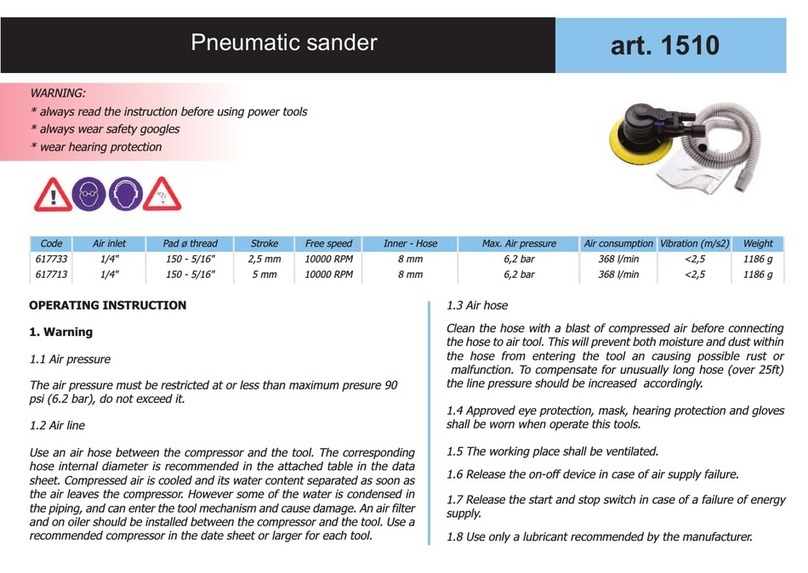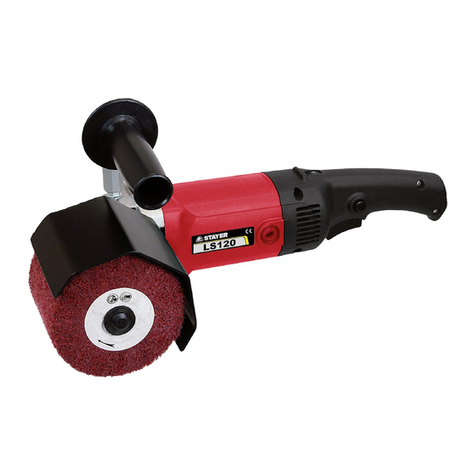
3 — Français
RÈGLES DE SÉCURITÉ GÉNÉRALES RELATIVES
AUX OUTILS ÉLECTRIQUES
Ranger les outils motorisés hors de la portée des enfants
et ne laisser personne n’étant pas familiarisé avec l’outil ou
ces instructions utiliser l’outil. Dans les mains de personnes
n’ayant pas reçu des instructions adéquates, les outils sont
dangereux.
Entretenir les outils motorisés. Vérifier qu’aucune pièce
mobile n’est mal alignée ou bloquée, qu’aucune pièce
n’est brisée et s’assurer qu’aucun autre problème ne
risque d’affecter le bon fonctionnement de l’outil. En
cas de dommages faire réparer l’outil avant de l’utiliser de
nouveau. Beaucoup d’accidents sont causés par des outils mal
entretenus.
Garder les outils bien affûtés et propres. Des outils
correctement entretenus et dont les tranchants sont bien affûtés
risquent moins de se bloquer et sont plus faciles à contrôler.
Utiliser l’outil, les accessoires et embouts, etc. conformément
à ces instrutions pour les applications pour lesquelles ils
sont conçus, en tenant compte des conditions et du type
de travail à exécuter. L’usage d’un outil motorisé pour des
applications pour lesquelles il n’est pas conçu peut être
dangereux.
UTILISATION ET ENTRETIEN DE LA PILE
Ne recharger qu’avec l’appareil spécifié par le fabricant. Un
chargeur approprié pour un type de pile peut créer un risque
d’incendie s’il est utilisé avec un autre type de pile.
Utiliser exclusivement le bloc-pile spécifiquement indiqué
pour l’outil. L’usage de tout autre bloc peut créer un risque de
blessures et d’incendie.
Lorsque le bloc-piles n’est pas en usage, le garder à l’écart
d’articles tels qu’attaches trombones, pièces de monnaie,
clous, vis ou autres petits objets métalliques risquant
d’établir le contact entre les deux bornes. La mise en court-
circuit des bornes de piles peut causer des étincelles, des
brûlures ou un incendie.
En cas d’usage abusif, du liquide peut s’échapper des
piles. Éviter tout contact avec ce liquide. En cas de contact
accidentel, rincer immédiatement les parties atteintes avec
de l’eau. En cas d’éclaboussure dans les yeux consulter un
médecin. Le liquide s’échappant des piles peut causer des
irritations ou des brûlures.
DÉPANNAGE
Les réparations doivent être confiées à un technicien
qualifié, utilisant exclusivement des pièces identiques à
celles d’origine. Ceci assurera le maintien de la sécurité de
l’outil.
Utiliser exclusivement des pièces identiques à celles
d’origine pour les réparations. Se conformer aux instructions
de la section Entretien de ce manuel. L’usage de pièces non
autorisées ou le non-respect des instructions peut présenter
des risques de choc électrique ou de blessures.
Lorsque l’outil est utilisé pour un travail risquant de le
mettre en contact avec des fils électriques cachés, le tenir
par les surfaces de prise isolées. Le contact d’un accessoire
de coupe avec un fil sous tension « électrifie » les pièces
métalliques exposées de l’outil et peut électrocuter l’utilisateur.
Apprendre à connaître l’outil. Lire attentivement le manuel
d’utilisation. Apprendre les applications et les limites
de l’outil, ainsi que les risques spécifiques relatifs à son
utilisation. Le respect de cette consigne réduira les risques
d’incendie, de choc électrique et de blessures graves.
Toujours porter une protection oculaire certifiée conforme
à la norme ANSI Z87.1. Le respect de cette règle réduira les
risques de blessures graves.
Protection respiratoire. Porter un masque facial ou un
masque antipoussière si le travail produit de la poussière.
Le respect de cette consigne réduira les risques de blessures
graves.
Protection auditive. Porter une protection auditive lors de
l’utilisation prolongée. Le respect de cette règle réduira les
risques de blessures graves.
Les outils fonctionnant sur piles n’ayant pas besoin d’être
branchés sur une prise secteur, ils sont toujours en état
de fonctionnement. Tenir compte des dangers possibles
lorsque l’outil n’est pas en usage et lors du remplacement
des piles. Le respect de cette consigne réduira les risques
d’incendie, de choc électrique et de blessures graves.
Ne pas placer les outils électriques sans fil ou leurs piles
à proximité de flammes ou d’une source de chaleur. Ceci
réduira les risques d’explosion et de blessures.
Ne pas écraser, faire tomber ou endommager le bloc-
piles. Ne jamais utiliser un bloc-piles ou un chargeur
qui est tombé, a été écrasé, a reçu un choc violent ou a
été endommagé de quelque façon que ce soit. Une pile
endommagée risque d’exploser. Éliminer immédiatement toute
pile endommagée, selon une méthode appropriée.
Les piles peuvent exploser en présence d’une source
d’allumage, telle qu’une veilleuse. Pour réduire les risques
de blessures graves, ne jamais utiliser un appareil sans fil, quel
qu’il soit, en présence d’une flamme vive. En explosant, une
pile peut projeter des débris et des produits chimiques. En cas
d’exposition, rincer immédiatement les parties atteintes avec
de l’eau.
Ne pas recharger un outil fonctionnant sur piles dans un
endroit humide ou mouillé. Ne pas utiliser, remiser ou
charger le bloc-piles ou produits dans des emplacements
où la température est inférieure 10 °C (50 °F) à ou supérieure
à 38 °C (100 °F). Ne pas ranger l’outil à l’extérieur ou dans un
véhicule.
Si l’outil est utilisé de façon intensive ou sous des
températures extrêmes, des fuites de pile peuvent se
produire. En cas de contact du liquide avec la peau,
rincer immédiatement la partie atteinte avec de l’eau.
En cas d’éclaboussure dans les yeux, les rincer à l’eau
fraîche pendant au moins 10 minutes, puis contacter
immédiatement un médecin. Le respect de cette règle réduira
les risques de blessures graves.
Conserver ces instructions. Les consulter fréquemment et
les utiliser pour instruire les autres utilisateurs éventuels. Si cet
outil est prêté, il doit être accompagné de ces instructions.
AVERTISSEMENTS DE SÉCURITÉ RELATIFS AU PONCEUSE
